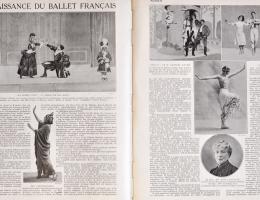Ma Mère l’Oye
Pavane de la Belle au Bois Dormant – Petit Poucet – Laideronnette, Impératrice des Pagodes – Les Entretiens de la Belle et de la Bête – Le Jardin féerique.
It was for the young children of his friends, the Godebskis, that Ravel decided to compose an easy piano piece for four hands inspired by one of their favorite fairy tales. This was the Pavane of 1908. He then added the four other pieces, which were harder to play and first performed by adults at the Salle Gaveau. In 1911, he orchestrated the pieces to form a suite. Although he later expanded the work into a ballet, it was this orchestral suite of five pieces, so different in mood and magical in colour, that became a popular concert work. Ravel’s admission that Les Entretiens de la Belle et la Bête (Conversations of Beauty and the Beast) were “The fourth Gymnopédie”, clearly showed the influence of Erik Satie’s minimalist aesthetics, apparent from the start: the Pavane is almost entirely played on the white keys. Writing for children allowed Ravel to indulge in simplicity and rebel against the current taste for complicated harmonies. There is modal shading reminiscent of plainsong in Petit Poucet (Tom Thumb) which,masquerading as an exercise in even quavers and conjunct intervals, takes its distinctive flavour from Ravel’s bending of the stated rules. Laideronnette (Empress of the Pagodas) continues the challenge by restricting itself (ostensibly) to the five notes of the Chinese scale. The Entretiens are like a blueprint for a waltz; as is Le Jardin féérique (The Fairy Garden), whose sombre beginning only serves as a foil for the brilliance of the ending.

